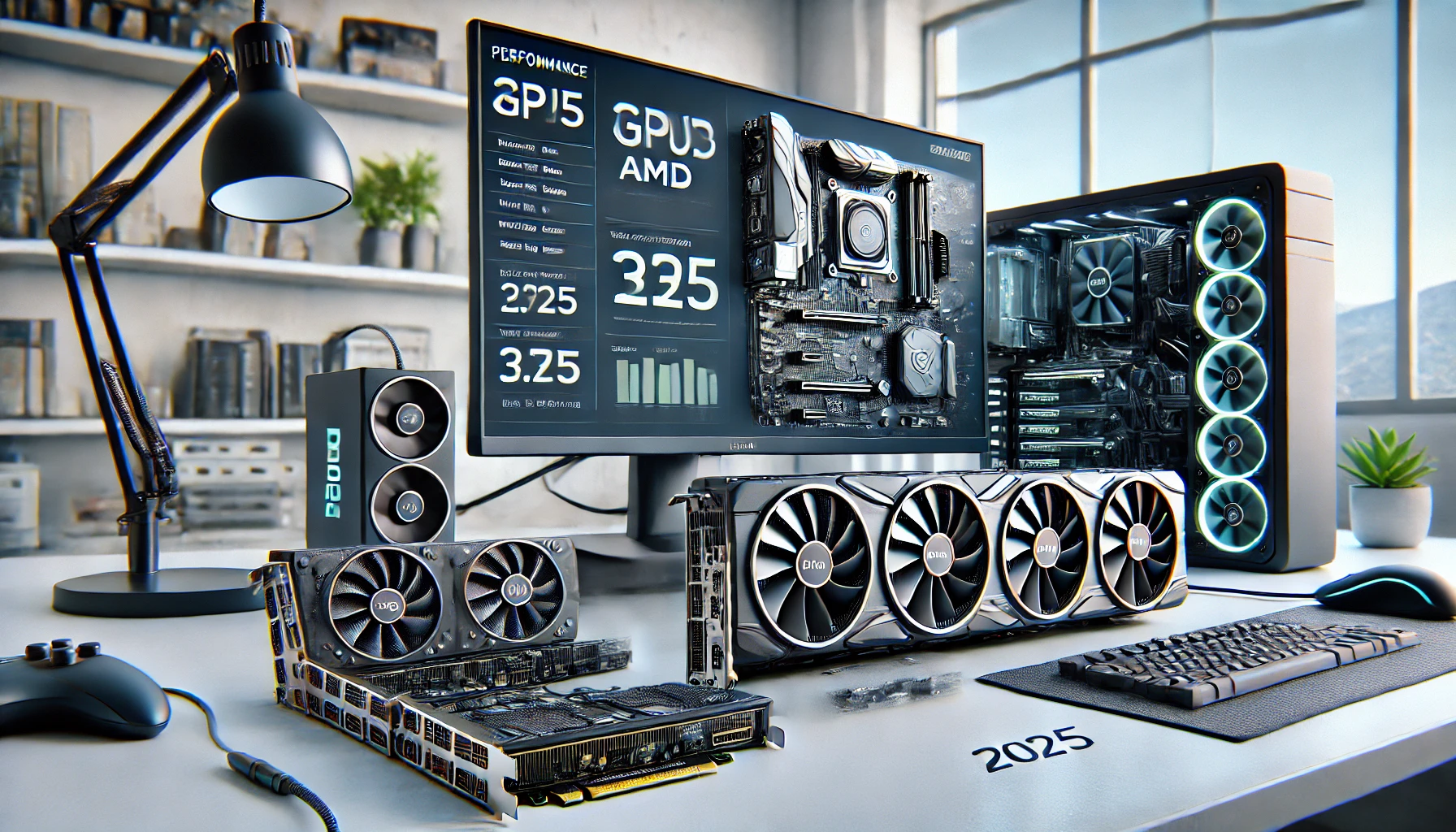Whether you’re building a gaming rig, a creative workstation, or a powerful all-around desktop, the graphics card (GPU) is one of the most important components in your system. In 2025, with demanding games and creative software pushing hardware to its limits, choosing the right GPU is more important than ever.
This guide will help you understand the role of the GPU, how to compare models, what specs really matter, and how to choose the best graphics card for your needs and budget.
What Does a Graphics Card Do?
A GPU (Graphics Processing Unit) renders images, video, and animations. It’s responsible for what you see on the screen—especially in gaming, video editing, 3D rendering, and tasks involving high-resolution visuals.
There are two types of GPUs:
- Integrated: Built into the CPU (suitable for basic tasks)
- Dedicated: A separate, powerful component designed for performance
If you’re serious about gaming, streaming, editing, or 3D design, a dedicated GPU is a must.
Key GPU Manufacturers in 2025
✅ NVIDIA
Known for:
- Top-tier performance
- Ray tracing (RTX series)
- DLSS (AI-powered upscaling)
- Strong driver support
✅ AMD
Known for:
- Competitive price-to-performance
- FSR (FidelityFX Super Resolution)
- Better performance per watt in some models
Both offer excellent GPUs—it depends on your needs and preferences.
What Specs to Consider in a GPU
1. VRAM (Video RAM)
VRAM is dedicated memory for graphical tasks. It affects how well your card handles textures, resolutions, and multiple displays.
- 4GB: Entry-level gaming (1080p)
- 6–8GB: Mid-range gaming, 1080p to 1440p
- 12GB+: High-end gaming (1440p/4K), editing, 3D rendering
💡 In 2025, 8GB is the minimum recommended for modern AAA games.
2. Core Count and Architecture
- NVIDIA uses CUDA cores
- AMD uses Stream Processors
More cores = more processing power, but architecture and software optimization also matter. For example, an RTX 4060 may outperform an older RTX 2080 despite having fewer cores.
3. Ray Tracing and AI Features
Modern GPUs support ray tracing, which simulates realistic lighting and shadows. It’s demanding, but adds visual realism.
- NVIDIA: RTX series + DLSS 3
- AMD: RX 7000 series + FSR 2/3
If you play ray-traced games, NVIDIA still leads in this area—but AMD is catching up.
4. Power Requirements
High-end GPUs consume a lot of power. Check:
- Wattage required (e.g., 250W, 350W+)
- Power connectors (6-pin, 8-pin, or 12VHPWR for newer NVIDIA cards)
- PSU compatibility (ensure your power supply has enough wattage and connectors)
Example:
- RTX 4070 Super: ~220W
- RX 7900 XTX: ~350W
5. Cooling and Form Factor
GPUs come in various sizes and cooling designs:
- Single-fan: Compact builds, lower performance
- Dual-fan: Balanced cooling and noise
- Triple-fan: Better cooling, often larger in size
- Liquid-cooled GPUs: For overclocking and silence, usually expensive
💡 Make sure the GPU fits your case and has enough airflow.
6. Monitor Resolution and Refresh Rate
Match your GPU to your display:
- 1080p 60Hz: GTX 1650, RX 6500 XT, or newer
- 1440p 144Hz: RTX 4070, RX 7800 XT, or similar
- 4K 144Hz: RTX 4080/4090, RX 7900 XTX
Gaming at higher resolutions and frame rates requires more GPU horsepower.
7. Ports and Outputs
Check for compatibility with your monitor(s):
- HDMI 2.1: Required for 4K 120Hz displays
- DisplayPort 1.4/2.0: Preferred for high refresh rate monitors
- Some GPUs also include USB-C/VirtualLink (rare in 2025)
Best GPUs by Category in 2025 (as of current trends)
| Category | Recommended GPU | VRAM | Notes |
|---|---|---|---|
| Budget 1080p | AMD RX 6600 / NVIDIA RTX 3050 | 8GB | Great for esports and older AAA titles |
| Mid-range 1440p | AMD RX 7700 XT / NVIDIA RTX 4060 Ti | 8–12GB | Best price/performance for modern games |
| High-end 4K | AMD RX 7900 XTX / NVIDIA RTX 4080 Super | 16–24GB | Future-proof, high refresh rates |
| Content Creation | NVIDIA RTX 4070 Ti / 4090 | 12–24GB | Strong performance in rendering and AI |
| Compact Builds | ASUS Dual / MSI Aero variants | Varies | Shorter GPU size, ideal for Mini-ITX cases |
Tips Before Buying a GPU
- Check availability: Prices and stock vary by region and demand
- Compare benchmarks: Use sites like TechPowerUp, Tom’s Hardware, or YouTube
- Think ahead: Will you be gaming at 1080p forever? Plan for upgrades
- Look at your entire system: A powerful GPU with a weak CPU can bottleneck performance
Common Mistakes to Avoid
- Buying a GPU that doesn’t fit in your case
- Underestimating power supply requirements
- Overspending on a GPU for low-resolution gaming
- Ignoring port compatibility with your monitor
Final Thoughts: Performance That Fits
Your graphics card is often the most expensive and performance-critical part of your build. In 2025, the choices are better than ever, with competitive offerings from both AMD and NVIDIA. The best GPU for you depends on your resolution, budget, and type of workload.
